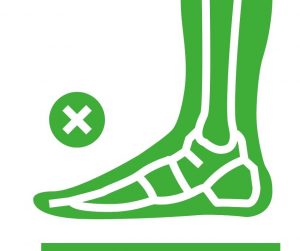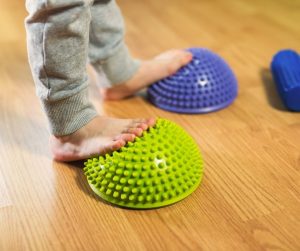As your child grows you will have found yourself going on a number of shopping trips for shoes.
In the early stages of development you may have noticed your child experiencing some foot related issues like flat feet, leg pain, or trouble with balance. It is not unusual for children to have orthotics to help reduce the likelihood of these problems occurring. But how would you know if your child needs orthotics at all?
Firstly,
it’s important to take into consideration your child’s age. Under the age of 6, children are usually flat-footed. This is because children of this age are still developing the muscles that help create the arch in the foot that an adult would have. Therefore, if your child is exhibiting signs of flat feet before the age of 6 then you still need to give them time to grow before turning to orthotics.
By the age of 6 a child would usually have the muscles and bones to help control their movements and the arch of their foot should be forming well.
At the age of 9 the arches in the foot are usually strong. Reviewing your child’s foot arch is fairly simple and can be done by asking them to stand. When looking at the foot there should be a slight upward curve when they are touching the floor.
So what happens if there is barely any arch or there is none at all?

This is a sign that your child may have flat feet. This happens when the muscles and bones are not supportive enough and make the footrest in a flatter position.

There are a variety of reasons why this may occur.
Obesity can contribute to flat feet due to weight distribution in the lower part of the body.
Once disorders or diseases have been ruled out, flat feet may be just a simple case of how the bones, ligaments and muscles are connected and how your child uses them.
If this is the case then physiotherapy treatment and custom orthotics can help.
If undetected flat feet can lead to pain and / or deformities in childhood, adolescence and adulthood. Now let’s look at 4 areas that can be affected and how to look out for it.
1. Pain in the ankles and / or feet
If your child is saying they are experiencing pain in their ankles or feet and they have a reduced arch or no arches in their feet, it’s a good indication they have flat feet.
2. Ankles turning excessively inwards (Over Pronated Ankles)
Over pronation can lead to reduced stability in the ankle. This can cause strain on their hips, back, legs, knees, and of course, their feet. Children who have overpronated ankles tend to also have flat feet.
3. Pain in the heel or sole of the foot (Plantar Fasciitis)
If your child reports a pulling feeling between their heel and their toes, it may be an indication of flat feet and Plantar Fasciitis. If your child is sporty then it is important to have an effective exercise program as well as addressing the underlying issue with possible foot support.
4. Problems with walking or not taking part in activities
If your child informs you that their feet or ankles are sore after walking around at school or when doing sports, be sure to rule out any significant injuries before looking at flat feet as a cause of pain.
If your child reports these symptoms, it is important to address them.
Remember
If you are interested in booking an appointment with one of our Chartered Physiotherapists that specialise in Biomechanics or simply need some guidance, then please give us a call on 021 4633455 or book online below.
We hope you enjoyed this blog by Mark Canning, Chartered Physiotherapist.
This blog is provided for information purposes only. The content is not intended to be a substitute for professional medical advice, diagnosis or treatment. Seek the advice of your doctor with any queries regarding a medical condition.
